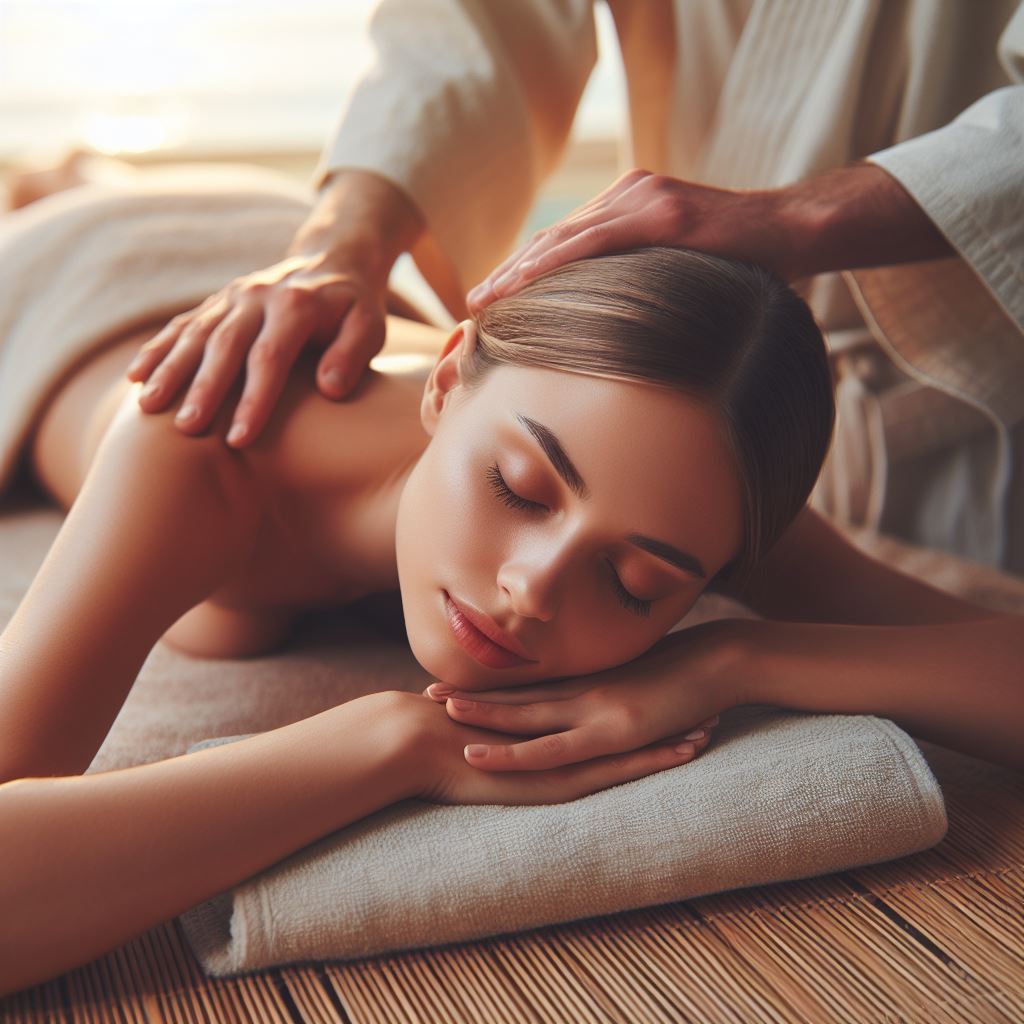Do you feel tired, sore, or stressed after a long day? Do you wish you could enjoy the soothing benefits of a massage without any hassle? Massage is a great way to relax your body and mind, but it can also have some unexpected side effects if you don’t take proper care of yourself afterwards.
In this post, we will share with you some simple and effective tips on how to enhance your post-massage care. You will learn how to hydrate, nourish, relax, and stretch your muscles after a massage, and how to avoid any potential problems. By following these tips, you will be able to maximize the benefits of your massage and maintain your well-being.
Hydration
One of the most important things you can do after a massage is to drink plenty of water. Why is that? Because water helps your body to flush out the metabolic waste that is released from your muscles during the massage. This can prevent dehydration, headaches, and muscle soreness.
According to some experts, you should drink at least two glasses of water within an hour of your massage. However, the exact amount of water you need may vary depending on your body weight, activity level, and health conditions. A good rule of thumb is to drink half your body weight in ounces of water per day. For example, if you weigh 150 pounds, you should drink 75 ounces of water daily.
Here are some tips to help you stay hydrated after a massage:
- Drink water before and after your massage session. This will prepare your body for the massage and replenish the fluids you lose during the massage.
- Avoid drinks that can dehydrate you, such as alcohol, caffeine, soda, and sugary beverages. These drinks can hinder the recovery process and counteract the hydrating effects of water.
- Add some lemon, cucumber, mint, or berries to your water for some extra flavor and antioxidants. These ingredients can also help to alkalize your body and balance your pH levels.
- Eat foods that are high in water content, such as fruits, vegetables, soups, and salads. These foods can also provide you with vitamins, minerals, and fiber that can support your health and wellness.
Drinking water after a massage is not only good for your physical health, but also for your mental health. Water can help you feel refreshed, energized, and alert. It can also enhance your mood and cognitive function. By staying hydrated, you can enjoy the relaxation benefits of your massage for longer.
Nutrition
Another way to enhance your post-massage care is to eat a healthy snack after your massage. Eating a snack can provide you with energy, stabilize your blood sugar, and support your digestion. However, avoid eating anything too heavy or spicy, as that can cause indigestion, bloating, or nausea.
Here are some tips to help you choose the right snack after a massage:
- Eat something light and easy to digest, such as fruits, nuts, yogurt, or granola bars. These foods can also provide you with vitamins, minerals, and antioxidants that boost your immune system and reduce inflammation.
- Avoid foods high in fat, sugar, or salt, such as fried foods, sweets, or chips. These can slow down your digestion and increase your blood pressure, potentially negating the benefits of your massage.
- Drink a herbal tea, such as chamomile, ginger, or peppermint, to soothe your stomach and relax your mind. These teas can also help hydrate you and flush out toxins from your body.
- If you have any dietary restrictions or allergies, consult your massage therapist or nutritionist before eating anything after your massage. They can provide advice tailored to your specific needs and preferences.
Eating well after a massage is beneficial for both your physical and mental health. Eating a snack can help you feel satisfied, happy, and energized, and can enhance your mood and cognitive function. Nourishing your body extends the relaxation benefits of your massage.
Relaxation
One of the most enjoyable things you can do after a massage is to relax. Relaxing after a massage can enhance the healing process, prolong the relaxation benefits, and shield you from stress. Relaxing can also help you feel refreshed, energized, and alert. By relaxing, you can enjoy the relaxation benefits of your massage for longer.
Here are some tips to help you relax after a massage:
- Listen to soothing music, such as classical, ambient, or instrumental music. Music can help you calm your mind, lower your heart rate and blood pressure, and reduce anxiety and pain.
- Practice deep breathing, such as diaphragmatic breathing, box breathing, or 4-7-8 breathing. Deep breathing can help you oxygenate your blood, activate your parasympathetic nervous system, and release endorphins.
- Enjoy a quiet moment in nature, such as a walk in the park, a picnic in the garden, or a sunset on the beach. Nature can help you reduce stress, improve your mood, and boost your immune system.
- Take a warm bath with Epsom salt, essential oils, or bath bombs. A warm bath can help you ease any aches and pains, improve circulation, and promote sleep. Epsom salt can help you relax your muscles, detoxify your body, and replenish your magnesium levels. Essential oils or bath bombs can help you with aromatherapy, which can enhance your relaxation, mood, and well-being.
Relaxing after a massage is not only good for your physical health, but also for your mental health. Relaxing can help you feel satisfied, happy, and peaceful. It can also enhance your mood and cognitive function. By relaxing, you can enjoy the relaxation benefits of your massage for longer.
Stretching
One of the most beneficial things you can do after a massage is to stretch. Stretching after a massage can help you release any lingering muscle tension, improve your flexibility, and keep your blood flowing. Stretching can also help you prevent stiffness and soreness later, and maintain the effects of your massage longer.
Here are some tips to help you stretch after a massage:
- Stretch slowly and gently, and avoid bouncing or jerking. This can cause injury or damage to your muscles and tissues.
- Stretch within your comfortable range of motion, and do not force yourself beyond your limits. You should feel a mild tension, not pain, when you stretch.
- Hold each stretch for at least 30 seconds, and breathe deeply and evenly. This can help you relax your muscles and increase your oxygen intake.
- Stretch all the major muscle groups, such as your neck, shoulders, arms, chest, back, hips, legs, and feet. You can also focus on specific areas that are tight or sore after your massage.
- Use props or tools, such as a towel, a strap, a foam roller, or a tennis ball, to assist or enhance your stretches. These can help you reach deeper into your muscles and tissues, and massage any trigger points or knots.
Some examples of stretches you can do after a massage are:
- Neck rolls: Tilt your head to one side, and slowly roll it forward and to the other side. Repeat in the opposite direction. You should feel a stretch in your neck and upper shoulders.
- Shoulder shrugs: Lift your shoulders up toward your ears, and hold for a few seconds. Then lower them down and back, and squeeze your shoulder blades together. Repeat several times. You should feel a stretch in your shoulders and upper back.
- Arm circles: Extend your arms out to the sides, and make small circles with your hands. Gradually increase the size of the circles, and then reverse the direction. Repeat several times. You should feel a stretch in your arms and shoulders.
- Chest opener: Stand with your feet shoulder-width apart, and clasp your hands behind your back. Lift your arms up and away from your body, and squeeze your shoulder blades together. You should feel a stretch in your chest and front shoulders.
- Back twist: Sit on a chair or on the floor, and cross your right leg over your left. Place your left hand on your right knee, and your right hand behind you. Twist your torso to the right, and look over your right shoulder. Hold for 30 seconds, and then switch sides. You should feel a stretch in your back and obliques.
- Hip flexor stretch: Kneel on the floor, and bring your right foot forward. Place your hands on your right knee, and lean your hips forward. Keep your back straight, and your left knee on the ground. You should feel a stretch in your left hip and thigh.
- Leg swings: Stand with your feet hip-width apart, and hold onto a wall or a chair for balance. Swing your right leg forward and backward, keeping it straight. Then swing it side to side, crossing it in front of your left leg. Repeat with your left leg. You should feel a stretch in your legs and hips.
- Toe touches: Stand with your feet together, and bend forward from your hips. Reach your hands toward your toes, and relax your head and neck. You should feel a stretch in your hamstrings and lower back.
Stretching after a massage is not only good for your physical health, but also for your mental health. Stretching can help you feel refreshed, energized, and alert. It can also enhance your mood and cognitive function. By stretching, you can enjoy the relaxation benefits of your massage for longer.
Conclusion
You have learned how to enhance your post-massage care by following four simple and effective tips: hydration, nutrition, relaxation, and stretching. By doing these things, you can maximize the benefits of your massage and maintain your well-being. You can also avoid any potential negative side effects, such as dehydration, headaches, muscle soreness, or indigestion.
Massage is a wonderful way to relax your body and mind, but it can also have some unexpected side effects if you don’t take proper care of yourself afterwards. That’s why post-massage care is essential. It can help you prolong the relaxation benefits, enhance the healing process, and shield you from stress.
We hope you enjoyed this post and found it useful. If you have any questions or comments, please feel free to leave them below.





















